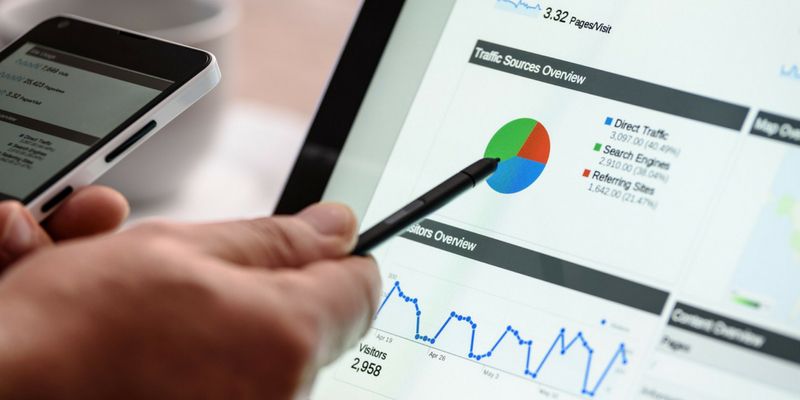Role of digital marketing in business development – a boon for SMEs and startups
Today, nearly every business lives and dies by brand visibility. With over four billion people on the planet now being on the internet, a huge part of that visibility is online – on social networks, search engines, forums, digital publications, and email inboxes.
In such a scenario, making your voice heard is a huge challenge for small businesses, solo entrepreneurs, and startups without a significant brand presence. However, a huge advantage today’s SMEs have over those of 10-15 years ago is the easy availability and widespread consumption of digital brand messaging. This has sought to level the playing field for companies of all sizes.
Let’s explore the advantages and new avenues of doing business that is available to small companies because of the predominance of digital marketing.

Precise measurement of ROI
Prior to the advent and spread of ‘digital’ marketing, businesses were dependent on ‘advertising’ or ‘sales’ much more than marketing. In fact, John Wanamaker’s famous quote, “Half the money I spend on advertising is wasted; the trouble is I don’t know which half,” held true for a hundred years – until barely a decade ago. The reason? A lack of exact metrics or key performance indicators (KPIs) that showed actual outcomes limited the extent to which marketing drove the business.
All that has changed with the easy and inexpensive availability of ‘martech’ tools that shifted the focus from spending to results. Digital marketing tool suites like SEMrush allow organizations to ascribe tangible value to business goals, create a culture of accountability across departments, personalize brand content and messaging, adapt strategies according to competitors’ tactics, analyze customer interactions, attribute revenue to the right channels in the correct amounts, and build and optimize data models to forecast sales more precisely.
Availability of multiple channels
When a startup sets out to “develop” its business, where does it look? Just a generation ago, there were few options other than amassing contact databases, cold calling, and advertising via TV and print. Digital marketing, on the contrary, went from emails, SEO, and PPC to a dazzling array of options today, including micro-targeted campaigns in multiple content formats on Facebook, Twitter, LinkedIn, Snapchat, Instagram, and practically every social network there is; content discovery and native advertising platforms like Taboola and Outbrain; mobile; email marketing platforms that let you send customized emails to precisely defined segments; and huge search engine-based ad networks like Google Ads and Bing Ads.
Easier customer acquisition
As a corollary to multi-channel marketing, small businesses now have the advantage of inbound leads and prospects. Unlike in the past, they don’t have to cry out loud for the attention of their audience. Marketing is now based on inbound strategies, which work by adding value at every interaction point along the customer’s journey with helpful, relevant, and contextual content.
This way, a new business can gain the trust and credibility that it would have lacked had it jumped head-on into marketing by throwing money at marketing channels that vie for customers’ attention by pushing brand messaging at their faces.
Small businesses with little understanding of the sales process can nevertheless handhold prospects through the Attract > Convert > Close > Delight funnel if they develop powerful and convincing content.
Keeping up with buyer behaviour
The days of frequent trips to the neighbourhood stores or visiting trade shows or manufacturers for B2B are virtually over. Business, as much as pretty much every other facet of communication, is being conducted over the smartphone. India will have over 500 million smartphone users by this year, according to a report published in the Economic Times. Further, Indian consumers spend close to three hours a day on their smartphones, while their US counterparts spend up to five hours a day (that’s where we’re heading).
Such is the amount of time TV, radio, and print are losing out on. In order to reach this customer segment and grow your business, you have no choice but to create and implement a mobile marketing strategy. This is an instance where digital marketing is becoming the very core of business development; in fact, no business that doesn’t market via this medium, directly or indirectly, has any hope of being taken seriously.
More profits
When you have the option of reaching more buyers on different platforms and interacting with them in their language with prior knowledge of their context and intent, you naturally have a far higher chance of making that sale.
A study conducted by Google and IPSOS found that companies that use digital marketing strategies had nearly three times revenue growth and similar chances of expanding their business both locally and globally, compared to those that didn’t.
Remember, profits don’t just come by increasing revenue – they also come by saving costs. Digital marketing is far more affordable than traditional marketing and advertising methods. A social media or email campaign can help you communicate your message to a far larger (but targeted) audience at a fraction of the cost of offline media advertising.
With a simple, integrated digital marketing strategy that sticks to the fundamentals, you can be well on your way to consistently grow your business. The key is to identify and tap the right digital channels and mediums, nurture leads that are most likely to convert, and make the sale with personalized targeting. All this is possible using easy-to-use tools and technology. You just have to find the ideal mix of automation and human intelligence-based tweaking that works for you.
Rohan Ayyar is Regional Marketing Manager at SEMrush, a digital marketing and competitive intelligence tool suite.
(Disclaimer: The views and opinions expressed in this article are those of the author and do not necessarily reflect the views of YourStory.)







